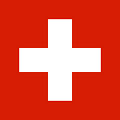ABOUT Switzerland
 Country Briefs: Covering an area of 41,285 square kilometers, landlocked Alpine country in Central Europe, bordering Germany, France, Italy, Austria and Liechtenstein, Switzerland, the hottest honeymoon destination is deemed to be heaven on earth.
Country Briefs: Covering an area of 41,285 square kilometers, landlocked Alpine country in Central Europe, bordering Germany, France, Italy, Austria and Liechtenstein, Switzerland, the hottest honeymoon destination is deemed to be heaven on earth.
Switzerland, the land of Alps is popular not just for its alpine scenic splendor but also for its cozy mountain chalets, exciting ski runs, window boxes brimming with red geraniums and washed cities nestled on tranquil lakes.
Apart from thousands of tourists by whom the country is swarming every time, the population of Switzerland is around 7,399,100 people. The capital city of Switzerland is Berne while its largest city is Zurich. Berne is the fourth most populous city of the country while Zurich, a leading vacation spot is also known as New Berlin.
Switzerland offers not just a myriad of timeless attractions but also a rich history to be acknowledged. According to historians the first inhabitants in the region were a Celtic tribe, Helvetia. Soon in 58 BC Switzerland came under the Roman Empire.
With the decline of Western Roman Empire, the Germanic tribes moved in the region. The Burgundians settled in the west and the Alamannis in the north. In 843 the Treaty of Verdun was signed and so the western part of Switzerland went under Lotharingia, the eastern part to the eastern kingdom of Louis the German that was to become the Holy Roman Empire.
In 12th century the Zahringer dynasty came to power and lasted till 1218. The Hapsburgs came to power around 1273 and Rudolph I of Habsburg was made the emperor of the Holy Roman Empire.
The Swiss in the battles of Morgarten in 1315 and Sempach in 1386 defeated the Habsburgs. In 1499 the Swiss emerged victorious in a war against the Swabian League and so acquired independence from the Holy Roman Empire.
In 1506, pope Julius II involved the Swiss Guards or the Swiss mercenary. However the Swiss army received a big jolt when it was badly defeated in the Battle of Marignano that took place on 13th and 14th September 1515.
In 1648 due to the Treaty of Westphalia Switzerland acquired independence from the Holy Roman Empire. These peace treaties that were meant to end the Thirty Years of War remained till the founding of the Cisalpine Republic by Napoleon Bonaparte in 1797.
Due to French Revolutionary Wars and the battles against Austria, Switzerland was infested with French and became a Helvetic Republic. In 1798 Switzerland became an arena of the Revolutionary Wars.
The Swiss independence was re-established in 1815 by the Congress of Vienna. The European Powers also declared Swiss neutrality and independence. In 1847 civil war broke out in the country, as a result of which Switzerland became a federal constitution in 1848.
Switzerland did not participate militarily and remained neutral during the course of the First and the Second World War but it did react to the Nazi Germany's invasion of Poland.
After facing countless upheavals over the years Switzerland joined the Council of Europe and in 1979 parts of canton of Berne acquired freedom and formed a new canton of Jura. In 2002 Switzerland was ratified a member of the United Nations.
Switzerland Cantons
- HASC: Hierarchical administrative subdivision codes. If periods are replaced by hyphens, these are the same as the canton codes from ISO 3166-2. The two-letter codes have been the official Swiss abbreviations for years.
- FIPS: Codes from FIPS PUB 10-4.
- NUTS: Codes from the Nomenclature of Territorial Units for Statistics.
- Population: Estimates as of 2001-12-31 from the Swiss Federal Statistical Office, rounded to the nearest 100.
- Lng: Majority language(s): French (f), German (g), Italian (i), Romansh (r).
- Capital: English name of capital. Name is also given in French, German, or Italian, when different from English. Exception: when canton has same name as capital, look under "Other names of subdivisions," because the foreign names of the capital will be the same.